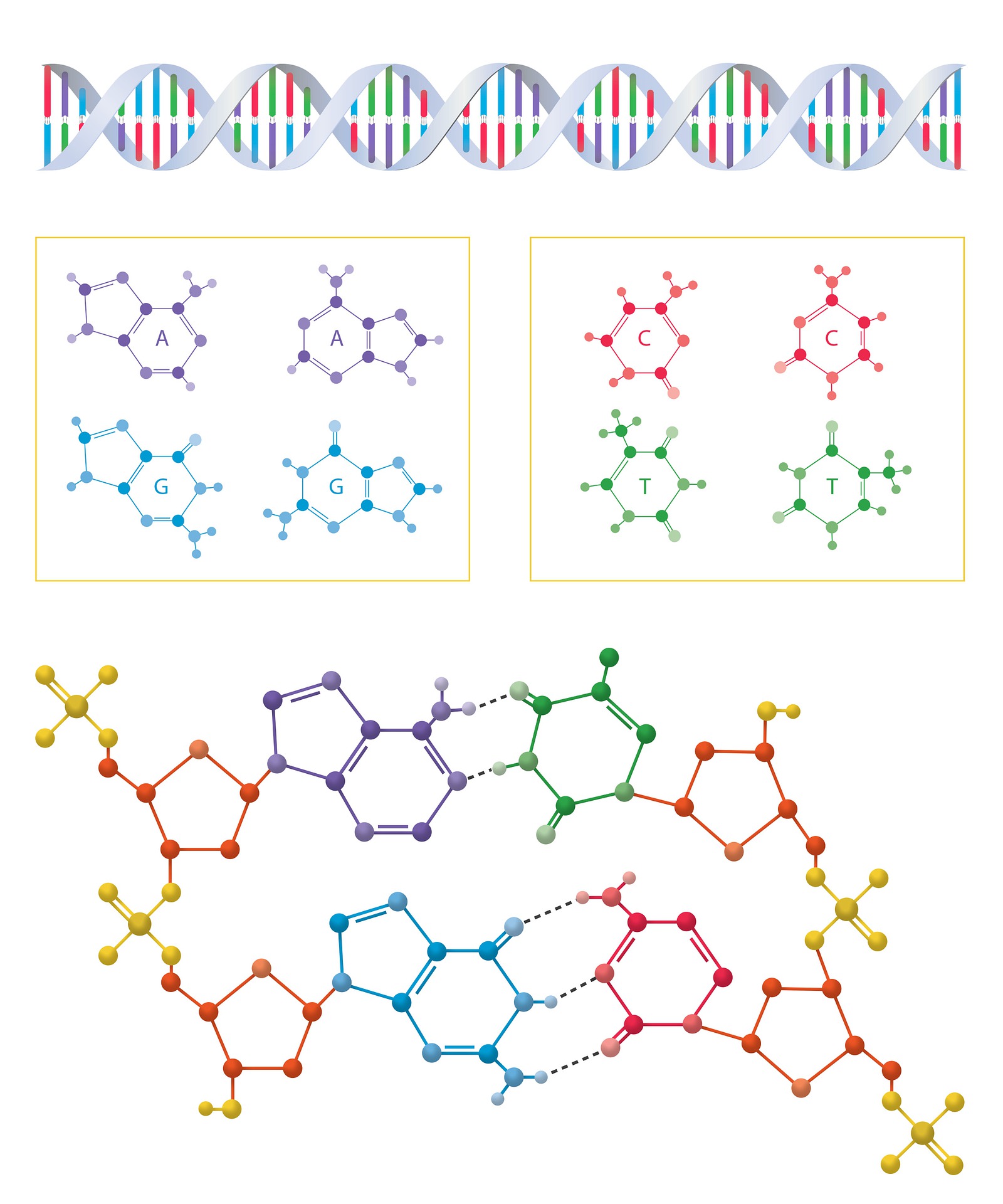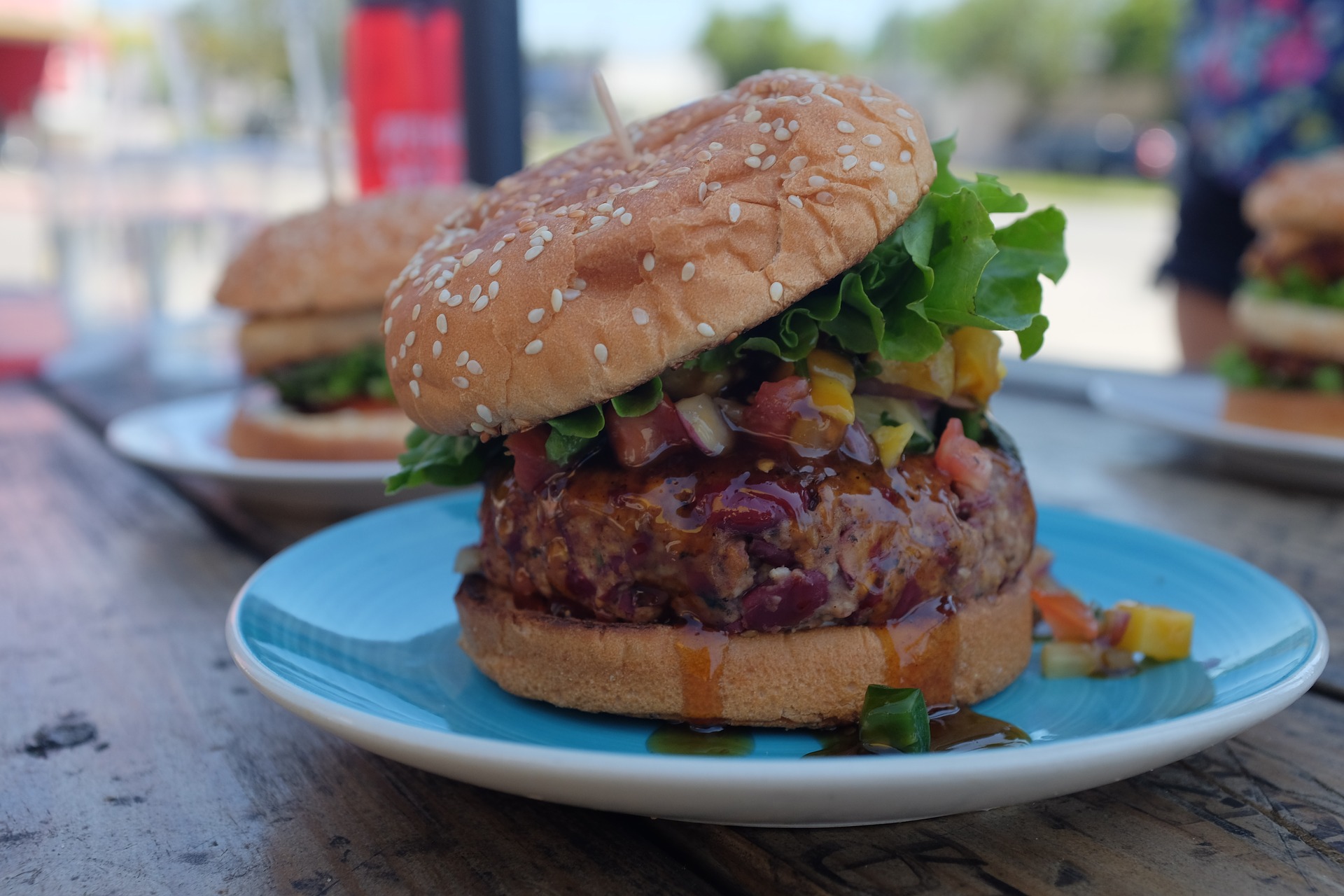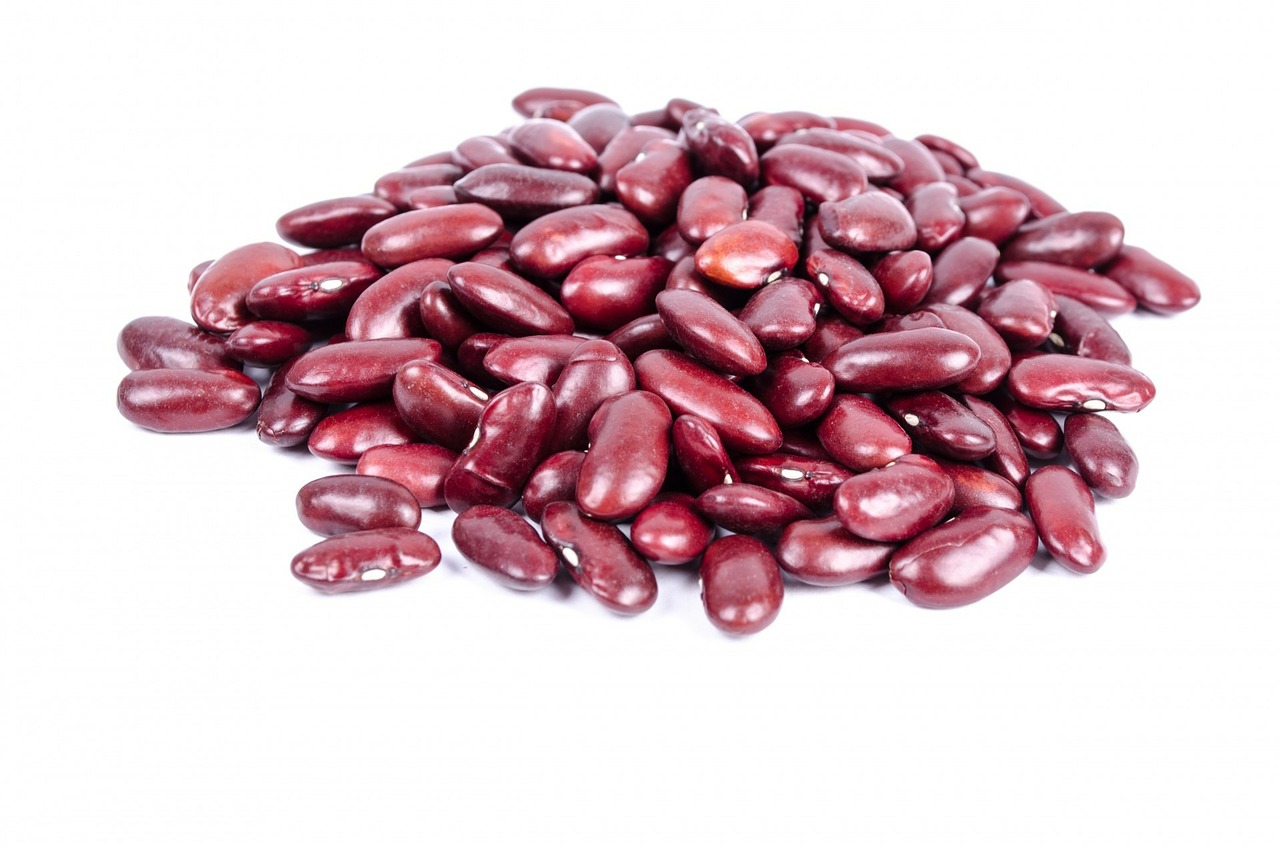Protein – What, How Much, and Where To Get It on a Whole-Food, Plant-Based Diet
By Dr. Robert Curtis
(Doctor of Chiropractic, Certified Medical Examiner (U.S. Dept. of Transportation), A.C.E. Certified Health Coach and Fitness Nutrition Specialist)
Last reviewed / slightly edited: 10/19/21
Time crunch? Save this page for later with Pocket, Instapaper, or Evernote.
Protein is one of the most important building blocks of the human
body. It is a vital component of every single cell, and without it
we simply wouldn’t be able to exist.
As a nutrient, protein is
perhaps most frequently associated with muscle growth, but is equally
important for everything from the body’s ability to maintain proper
organ function to the growth of our skin to wound repair.
Protein also helps regulate our metabolism and immune system. [1]
Our body's building blocks ...
 Amino acids form into proteins – our body's building blocks. (image source at end of article)
Amino acids form into proteins – our body's building blocks. (image source at end of article)In a larger sense, readily apparent in our visual and tactile senses, protein is a component serving as our structural framework, in the form of our muscles.
And in that same awareness, it's part of our skin, hair, nails, and eyes, as well.
Just below the surface, and further keeping our frame, an often overlooked fact is that our bones, too, consist of a large amount of protein in the form of collagen. [2]
Protein is also a structural component of our brain and nervous system.
And in a smaller, even micro, sense, protein serves as a more mobile structural and physiological component for things like blood cells, hormones, and enzymes.
Since proteins consist of amino acids, nine of which are essential and need to be supplied through food, consuming protein is a must.
From someone who just wants to stay healthy to professional athletes; getting enough protein is crucial.
So that begs the question, what amount and where do I get it from plants?
What amount of protein is needed?
Let’s take a closer look at the recommended intake and why plants are a great choice to provide it.
Also note, as recently pointed out by Harvard Medical School, the science on 'how much' is continuing. [3]
Thus, the amounts noted following are guideposts for reference.
To start with, as a foundation, in order for the body to support its structure and function, maintaining a minimum daily intake equal to 0.8 g/kg (0.36 g/lb) is the widely held average baseline. [3]
This means that an average adult with a weight of 75 kg (165 lbs) needs 60 grams of protein per day for basic body functions and structural maintenance.
However, as activity increases and possibly other stressing factors come into play, such as illness, studies show that your need for protein goes up.
More specifically; in the realm of increasing activity, 1.0, 1.3, and 1.6 g/kg (0.45, 0.6, and 0.7 g/lb.) of body weight, for activity levels of minimal, moderate, and intense, respectively. [4]
Additionally, some studies are noting a bit higher level, beyond the baseline, may be necessary for optimizing health, with a 2016 study review finding that for overall optimal health the range of 1.2 to 1.6 g/kg (0.54 - 0.7 g/lb.) was more ideal. [5]
Research continues ...
'Meat'-ing your 'plant' protein needs ...
 One delicious way to enjoy your plant protein - a plant-based burger. (image source at end of article)
One delicious way to enjoy your plant protein - a plant-based burger. (image source at end of article)Not a fan of counting numbers?
You can usually meet the requirements by just having the habit of making sure there’s a good protein source available in every meal.
Furthermore, a 2013 study,
with a multi-thousands sample size, noted that the vast majority of
people on all diet types, from meat eating to vegan, got more than
enough protein regularly. [6]
Additionally, Harvard Medical
School also pointed out that the current Dietary Guidelines for
Americans are encouraging of consuming protein rich foods that are more
healthy, and not concentrating on eating specific amounts of protein.
They
went on to state that looking at the package that your protein source
comes in is a good health strategy, too, with consideration for the
protein item to have a saturated fat content that's low and comes along
with other nutrients. [3]
Plant sources do well here, accordingly.
Can I over consume protein? And do plant proteins have any advantage?
Indeed, excess protein consumption is more the norm, though upon consuming beyond what your body needs the overage will typically be converted into fat.
There is a bit of a buffer to over consumption though, in that the body has to work harder – read, burn more calories – to digest and process protein – versus what's needed for carbohydrate or fat digestion – so, any fat that may be created by excess protein to some extent can replace what may have been just burned up in digestion.
This energy expended in the digesting and processing of protein, carbohydrates, and fat is referred to as dietary induced thermogenesis (DIT), or the thermic effect of food (TEF).
As noted, exceeding this energy buffer will typically result in more fat being created, so, in general, being more mindful of simply meeting the recommendations for your lifestyle, and not going over, should keep things in balance.
Additionally, in healthy people, in cases where recommended amounts may be exceeded, there is an ability to process the excess protein, including through their kidneys, though as noted they may gain unwanted weight.
Kidney beans can contribute to getting enough protein (and are easy on your kidneys) ...
 Plant-based proteins are easier on your kidneys. (image source at end of article)
Plant-based proteins are easier on your kidneys. (image source at end of article)However, for the average adult, amounts in the realm of 2.0 g/kg (0.9 g/lb.) of body weight, repeatedly, can lead to digestive, vascular, and kidney problems and is not advised. [4]
Though highly trained resistance exercise oriented athletes may necessitate more for maintaining their muscle mass – with upwards of 3.5 g/kg (1.6 g/lb.) of body weight per day. [4]
And a 2018 study indicated that such
athletes may achieve the same effect though at just 2.2 g/kg (0.99
g/lb.) of body weight. [7]
In contrast, for people with kidney disease, high protein diets can affect the kidneys negatively much more readily.
However,
when it comes to plant-based proteins in particular, in consideration
of kidney health, a recent review analysis of multiple studies
demonstrated plant-based proteins having a neutral, and
non-inflammatory, effect on kidneys. [8]
Whole-food, plant-based protein sources
There are a number of commonly eaten whole-food, plant-based protein sources.
Top plant sources of protein include (ranked from high to low, in amount of protein per reference serving):
(Principal reference, Nutritionix. [9] Amounts depicted are typical though may vary a bit by company - refer to labels.)
Legumes (cooked)
- Lentils ½ cup - 9g
- Black Beans ½ cup - 8g
- Red Kidney Beans ½ cup - 7g
- Pinto Beans ½ cup - 7g
- Black-eyed Peas ½ cup - 7g
- Chickpeas ½ cup - 7g
Soy Derived Foods
- Tempeh ½ cup - 16g
- Tofu ½ cup - 10g
- Soymilk 1 cup - 8g
Grains (and grain-like foods)
- Wheat Berries ½ cup - 6g
- Kamut ½ cup - 6g (an ancient wheat grain)
- Spelt ½ cup - 6g (an ancient wheat grain)
- Teff ½ cup - 5g (an ancient grain - not related to wheat)
- Amaranth ½ cup - 5g (a seed cooked like a grain)
- Quinoa ½ cup - 4g (a seed cooked like a grain)
- Oatmeal ½ cup - 3g
- Buckwheat ½ cup - 3g (a seed cooked like a grain - not related to wheat)
- Corn (brown or white) ½ cup - 3g
- Rice (brown or white) ½ cup - 2g
Seeds
- Hemp Seeds 3 tablespoons - 11g
- Pumpkin Seeds 1 ounce - 9g
- Flax Seeds 1 ounce - 6g
- Sunflower Seeds 1 ounce - 6g
- Chia Seeds 1 ounce - 5g
Nuts
- Peanut Butter 2 tablespoons - 8 g
- Almonds 1 ounce - 6g
- Pistachios 1 ounce - 6g
- Hazelnuts 1 ounce - 4g
- Walnuts 1 ounce - 4g
- Pecans 1 ounce - 3g
Vegetables (cooked)
- Peas ½ cup - 5g
- Artichoke 1 medium - 4g
- Spinach ½ cup - 3g
- Broccoli ½ cup - 2g
Summary
In a nutshell (or peapod, or ... ; )
As an essential part of every diet, eating enough protein is important and necessary.
It is recommended to maintain a daily intake around at least 0.8g/kg of body weight each day on up to an average of 1.3 g/kg (0.36 - 0.6 g/lb) of body weight, accompanied by a more active lifestyle.
By checking labels and serving portion amounts you should be able to readily see if you're getting enough daily.
And as a general rule, protein intake should increase in relation to physical activity, or during periods of intense recovery such as after prolonged illness.
Related Recipe
Red Lentil Soup with Cumin and Lemon
Feel free to print out the recipe by clicking on the "More Options..." tab – on the recipe below – (then choose the Print option). The "More Options..." tab is a bit below the picture and to the right of the Add To My Cookbook button.
Article References:
1. Muth, N. (M.D., M.P.H., R.D.), 2018, ACE Fitness Nutrition Manual (pp. 16-19), American Council on Exercise, acefitness.org
2. National Institutes of Health (2018, October). What Is Bone? Retrieved from https://www.bones.nih.gov/health-info/bone/bone-health/what-is-bone
3. Harvard Health Blog (2019, June). How much protein do you need every day? Retrieved from https://www.health.harvard.edu/blog/how-much-protein-do-you-need-every-day-201506188096
4. Food Funct. 2016 Mar;7(3):1251-65. doi: 10.1039/c5fo01530h. Dietary protein intake and human health.
Wu G1.
5. Appl Physiol Nutr Metab. 2016 May;41(5):565-72. doi: 10.1139/apnm-2015-0550. Epub 2016 Feb 9.
Protein "requirements" beyond the RDA: implications for optimizing health.
Phillips SM1, Chevalier S2,3, Leidy HJ4
6. J Acad Nutr Diet. 2013 Dec;113(12):1610-9. doi: 10.1016/j.jand.2013.06.349. Epub 2013 Aug 27.
Nutrient profiles of vegetarian and nonvegetarian dietary patterns.
Rizzo NS, Jaceldo-Siegl K, Sabate J, Fraser GE.
7. J Int Soc Sports Nutr. 2018 Feb 27;15:10. doi: 10.1186/s12970-018-0215-1. eCollection 2018.
How much protein can the body use in a single meal for muscle-building? Implications for daily protein distribution.
Schoenfeld BJ1, Aragon AA2.
8. Am J Physiol Renal Physiol. 2011 Nov;301(5):F919-31. doi: 10.1152/ajprenal.00068.2011. Epub 2011 Aug 31.
The Western-style diet: a major risk factor for impaired kidney function and chronic kidney disease.
Odermatt A1.
9. Nutritionix.com (2020). Nutritionix Database. Retrieved from https://www.nutritionix.com/database
Images:
1. Amino acids form into proteins – our body's building blocks. Image by LJNovaScotia from Pixabay
2. One delicious way to enjoy your plant protein - a plant-based burger. Image by Marcel Gnauk from Pixabay
3. Plant-based proteins are easier on your kidneys. Image by PublicDomainPictures from Pixabay


